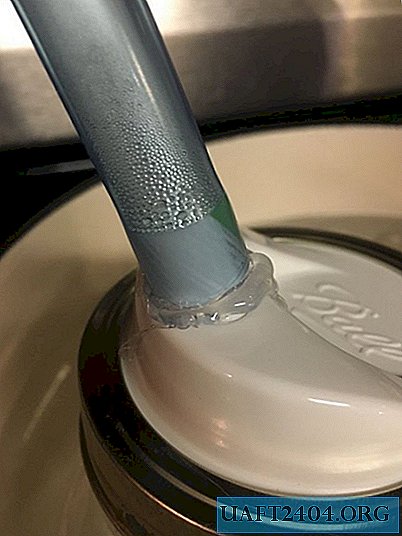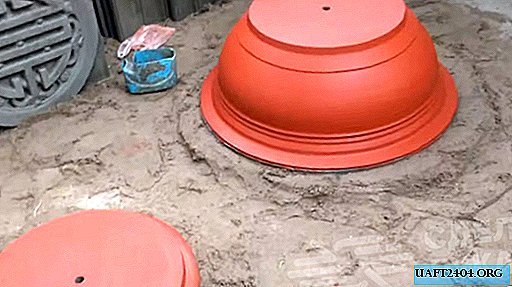Share
Pin
Tweet
Send
Share
Send

If you go into details, it will be more likely not hardening, but cementation, which aims to increase the hardness and wear resistance of the metal.
Knife edge hardening
Take a knife.

We pass along the edge of the file, while paying attention to a dull sound and easy grinding of metal. All indications are that the knife is made of ordinary steel and has not been hardened before.

For hardening, you need graphite. It is best to get graphite from the graphite brushes of a generator, a brush motor. Of course, I have not tried it, but you can also get graphite rods from finger batteries, simple pencils.
In general, we grind this graphite into powder in any way. Grinding is not particularly necessary, without fanaticism.

Next, I need a metal base on which graphite powder will lie. I took a piece of galvanized profile from drywall.

For the process of hardening the edges of the knife, you also need a power source. Ideally, this is a pulsed DC welding machine set to a minimum. You can also try to repeat the process using another source, a voltage of 30-60 AC or DC. There is another dangerous option: to use a 220 V network directly, in series with an incandescent lamp, but this is already fraught, so I do not recommend it.


Pour graphite. We connect the plus of the welding machine to the base of the substrate, and minus to the knife.
We set the inverter to the minimum settings and turn it on.
We begin the process of edge hardening. To do this, very carefully draw the edge of the knife along the graphite pile.
Our task is to: first - prevent the blade from touching the base. And the second is to prevent the burning of graphite. In both cases, the blade will be damaged.



Ideally, the blade should be moved slowly, and graphite should flicker. Strongly the knife naturally does not need to be lowered.
As soon as you notice the contact point is warming up, immediately raise the knife.


The whole process does not last relatively long, about 5 minutes. During this time, I managed to walk several times along the entire length of the blade.
Knife hardening result

Take the file and shuffle the blade as the first time. Immediately audible sound is heard, indicating the high hardness of the metal. Plus, the edge is almost impossible to process.

We cut a glass jar.

Notches leaves bless you!
We knock on a steel nail.

The result is excellent - there is not a scratch on the knife.

In the end, I chopped a nail with a knife, hitting it with a hammer.

The knife was not hurt!
I'm not a big expert in hardening steel, but the method really clearly works. Local craftsmen say that such hardening increases the hardness of the metal section to almost 90 units. I can not disagree or refute, since there is no hardness tester. If you have questions or suggestions, as well as comments - write in the comments. Good luck to all!
Watch a video of the knife hardening process
Share
Pin
Tweet
Send
Share
Send











